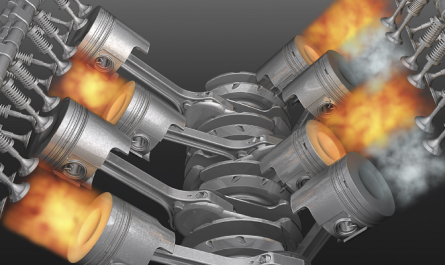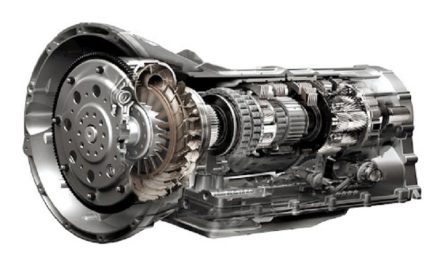1. Introduction
Understanding the difference between a camshaft sensor and a crankshaft sensor is essential for anyone looking to maintain or diagnose engine issues. These two critical components help your vehicle’s engine control module (ECM) manage timing, fuel injection, and ignition. While they work together to ensure smooth engine performance, their functions, locations, and failure symptoms are quite different. Whether you’re dealing with a Check Engine Light, engine misfires, or just curious about how camshaft and crankshaft sensors work, this guide will break it all down in simple terms to help you stay informed and confident.
2. What Is a Camshaft Sensor?
A camshaft sensor, also called a camshaft position sensor, monitors the position of the camshaft as it rotates. This helps the engine control unit (ECU) determine the exact timing for fuel injection and valve operation. It works closely with the crankshaft sensor to keep your engine running smoothly. Most camshaft sensors use Hall-effect technology and are usually located near the cylinder head. A faulty camshaft sensor can lead to poor acceleration, rough idling, or even no-start problems.
3. What Is a Crankshaft Sensor?
A crankshaft sensor, or crankshaft position sensor, keeps track of the crankshaft’s location and speed. This information is sent to the ECU, which uses it to control ignition timing and fuel injection. It’s usually found near the engine block or crank pulley and plays a key role in engine startup. Without a working crankshaft sensor, your car might stall, misfire, or fail to start entirely. It works hand-in-hand with the camshaft sensor to ensure engine synchronization.
4. Location and Design Differences
The camshaft sensor is typically located near the top of the engine, close to the camshaft or cylinder head. In contrast, the crankshaft sensor is mounted lower, usually near the crankshaft pulley or flywheel. While both use technologies like Hall-effect sensors, the crankshaft sensor often handles higher RPMs and produces faster signals. This difference in sensor location and design helps the ECU pinpoint engine timing with greater accuracy for smooth engine performance and better fuel efficiency.
5. Camshaft Sensor vs. Crankshaft Sensor: Key Differences
The main difference between a camshaft sensor and a crankshaft sensor lies in their function. The camshaft sensor monitors the camshaft’s position to help time the valve opening and closing, while the crankshaft sensor focuses on the crankshaft’s rotation to control ignition timing. The crankshaft sensor typically sends more frequent signals to the ECU due to its faster rotation. Together, these sensors ensure proper fuel delivery, combustion, and overall engine performance. If either fails, your car may experience starting issues or engine misfires.
6. What Happens If Either Sensor Fails?
A bad camshaft or crankshaft sensor can cause serious drivability problems. If the camshaft sensor fails, the ECU may struggle to time the fuel injectors properly, resulting in poor engine performance or a Check Engine Light. A failed crankshaft sensor can prevent the engine from starting altogether, as the ECU won’t know when to fire the spark plugs. In some cases, both sensors might show issues at once, making it harder to pinpoint the exact problem without a diagnostic scan.

7. Common Symptoms of Sensor Failure
Both sensors can cause noticeable symptoms when they fail. Common camshaft sensor failure symptoms include rough idling, reduced power, hard starts, or stalling. A failing crankshaft sensor may lead to intermittent stalling, engine misfires, or no-start conditions. Fault codes like P0340 (camshaft sensor) or P0335 (crankshaft sensor) can be detected using an OBD-II scanner. If you notice a drop in fuel economy or trouble starting your vehicle, a faulty sensor could be to blame.
8. How to Test Each Sensor
Testing either sensor involves a few simple tools: an OBD-II scanner, a digital multimeter, or an oscilloscope for signal waveforms. First, scan for error codes like P0340 or P0335. Then, test the sensor resistance values using a multimeter. For a deeper inspection, observe the waveform output using an oscilloscope while cranking the engine. This will show if the sensor is producing a signal. If there’s no signal or it’s irregular, the sensor may need replacing.
9. Cost of Repair and Replacement
The cost to replace a camshaft or crankshaft sensor depends on your vehicle model and whether you do it yourself or hire a mechanic. Typically, a camshaft sensor replacement costs between $75–$200, while a crankshaft sensor may range from $100–$300, including labor. DIY replacement can save you money if you’re comfortable working on your engine. Always use OEM or high-quality aftermarket sensors to ensure proper compatibility and long-term performance.
10. Should You Replace Both Sensors Together?
While it’s not always necessary to replace both sensors at once, doing so can help avoid future issues—especially if your vehicle has high mileage or if one failure led to synchronization issues. Replacing both ensures that the camshaft and crankshaft sensors are perfectly timed with one another, helping prevent misfires, stalling, and starting problems. If you’re already paying for diagnostics and labor, replacing both may offer peace of mind and better long-term reliability.
11. Sensor Impact on Fuel Economy and Emissions
Faulty sensors can directly affect your fuel economy and emissions. A bad camshaft sensor might cause the engine to inject too much or too little fuel, hurting MPG and increasing tailpipe emissions. Similarly, a faulty crankshaft sensor can result in incomplete combustion and timing issues, leading to excessive fuel use and higher carbon output. Keeping both sensors in good condition ensures your vehicle runs cleaner and passes emissions tests more easily.
12. Real-World Use Case Examples
Case 1: A vehicle with a failing camshaft sensor experienced delayed acceleration and rough idling. After diagnosing a P0340 code, the sensor was replaced, and the car’s performance instantly improved.
Case 2: A driver noticed the engine cutting off during turns. Diagnostics revealed a failing crankshaft position sensor. Once replaced, the intermittent stalling issue was resolved. These real-world examples show how sensor problems can affect drivability and why early diagnosis is crucial.
13. Conclusion
Both the camshaft and crankshaft sensors are vital for your engine’s timing, performance, and efficiency. While they serve different functions, they must work together in harmony. Knowing the symptoms of a failing sensor, how to test them, and when to replace them can save you from costly repairs and breakdowns. Whether you’re a car owner or a DIY enthusiast, keeping these sensors in check is key to a smooth, reliable ride.


